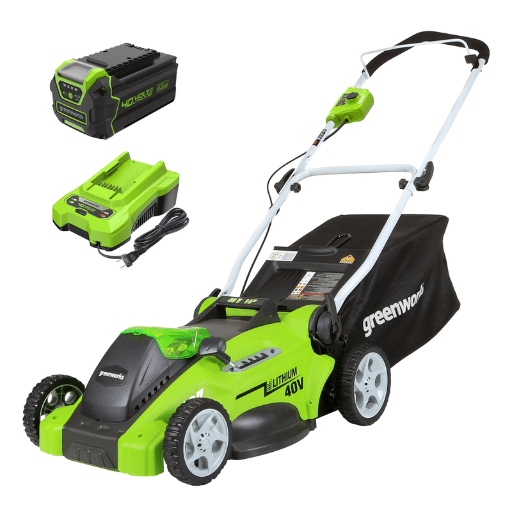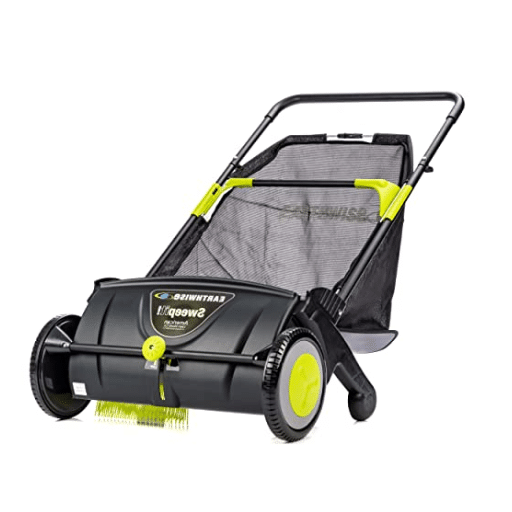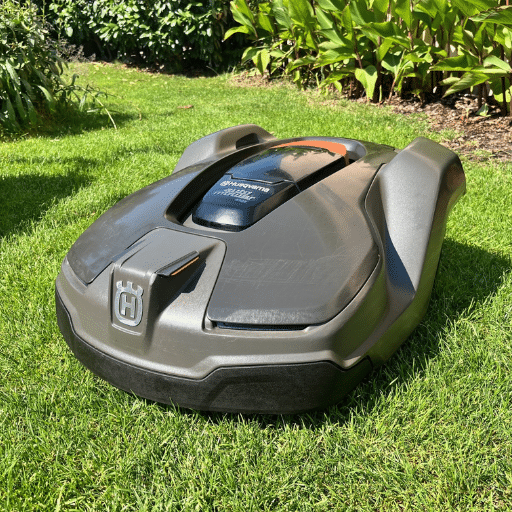A beautiful, healthy lawn starts with a properly functioning lawn mower. One step that is often skipped when keeping your lawn mower properly maintained is sharpening its blades. Dull blades will tear the grass unevenly which weakens the grass and allows entry of pests and diseases. If you feel that your lawn is not looking lush or being unevenly cut as perhaps it should be, then indeed it is time to look at the blades. This guide teaches you boatloads of simple yet effective ways to get the blades of your lawnmower sharpened. Experience in DIY or no lawn care, by the end, you will know how to keep your mower cutting smoothly and give a winning look to your lawn during the entire season.
Why Sharpening Your Lawn Mower Blade is Important

Lawn mower blades slowly became dull with use, resulting in uneven, torn grass. Sharpening blades with a clean, accurate cut makes it easier for grass to recover and lessens its chances of contracting diseases. Also, dull blades cause your mower to work a heck of a lot harder, thus becoming less efficient with time and lasting less. So, keeping your blades sharp amounts to a better lawn and mowing process.
Benefits of Sharp Mower Blades
- Healthier Lawn
Sharp mower blades create a clean, even cut, which minimizes damage to grass. Torn or jagged grass edges caused by dull blades are more vulnerable to pests, diseases, and stress from environmental factors. Research indicates that precise cuts help grass recover faster, promoting thicker and more resilient turf.
- Improved Efficiency
Well-maintained blades reduce the drag on your mower, requiring less engine power to operate. This not only saves time by making mowing faster and smoother but also conserves fuel or energy, depending on your mower type. Over time, this improves mowing performance and reduces operational costs.
- Extended Equipment Lifespan
A dull blade forces your lawn mower to work harder, which can lead to overheating and premature wear on the motor. Regularly sharpening blades reduces the strain on the engine, contributing to the durability and long-term functionality of your equipment.
- Better Grass Aesthetics
Sharp blades deliver a uniform, polished appearance to your lawn, giving it that professional, manicured look. Conversely, dull blades leave uneven patches and frayed edges, which can ruin the overall visual appeal of your yard.
- Cost Savings
Keeping your mower blades sharp reduces the need for frequent repairs or part replacements. Additionally, a well-maintained mower functions more efficiently, saving on fuel costs and extending intervals between servicing. Over a mowing season, these small savings can add up significantly.
By sharpening your blades regularly, you ensure a vibrant, healthy lawn while increasing the lifespan and efficiency of your lawn mower.
Signs That Your Lawn Mower Blade Needs Sharpening
1. Uneven Grass Cuts
A lawn that appears uneven and ragged after a mowing session is perhaps the best indicator of blades being dull. Sharp blades cut grass cleanly, while dull blades tear or shred the grass blades and leave an untidy look, which, when continued, may weaken the grass and make it susceptible to disease.
2. Fraying or Browning Grass Tips
Dull mower blades cut and damage grass tips, which may cause them to fray or brown shortly after mowing. A healthy grass cut is clean and green—that is, if the tips of your lawn look as if they have dry or burnt edges, then you may have to check your blades.
3. Harder Than Usual to Mow
If the mower is seemingly straining harder than that what it normally should, thereby making it slower or requiring multiple passes over an area, it may be due to dull blades. This manner of stressing the mower just increases time and work on your part to get a presentable job.
4. Visible Damage or Nicks on Blades
Check your mower blades regularly. If you see dents, nicks, or chips, these blades are worn out through prolonged use or on instances where the blades came into contact with debris such as rocks or sticks. Returning the blades to top working condition requires either sharpening or replacement.
5. Higher Fuel Consumption
The dull blades pressurize the mower to work hard for cutting grass, which can raise fuel consumption or battery usage for electric mowers. So, sharpening the blades can turn to be an elite method for efficient mowing and lower costs.
6. Vibrations or Strange Noises While Mowing
Dull or unbalanced blades can generate uncalled vibrations or strange noise on their way through grass. That is never a comfortable situation to handle and will lay the path to further damage of some of the internal parts of the mower in due course.
By identifying these symptoms ahead of time, you can take preemptive action to keep a sharp cutting edge on your blades, ensuring your mower works the best while keeping your lawn healthy and looking good. In the long run, regular maintenance of your blades could mean better performance and significant savings.
Consequences of Using a Dull Blade
Blurred blade dulls your lawn and diminishes the mower, too. Rather than providing a clean, crisp cut, dull blades tear and shred the grass, making it susceptible to the foul triple-D: diseases, pests, and environmental stress. It has been found that jagged tips of grass produced by dull blades quickly lose moisture, which affects the health and strength of the lawn. An uneven cut also causes discomfort in the form of uneven growth of certain patches of grass, resulting in an unbecoming slandered lawn.
From the point of view of the equipment, a dull blade means the lawn mower has to put in an extra effort, more fuel or electricity gets consumed, and the motor wears out faster. Landscaping experts have recorded a statement that maintaining sharp blades can decrease fuel consumption by 22%, thereby lengthening the life of the lawn mower. From here, the pressure inflicted on the lawn mower by the dull blade will eventually lead to costly repairs or even premature replacement. Maintaining sharpness of the blades will nurture green, sick-free, and intuitive lawn while saving time, energy, and money in the long haul.
Tools Needed to Sharpen Lawn Mower Blades

To sharpen lawn mower blades, you need tools like a file, angle grinder, bench vise, and blade balancer.
|
Tool |
Purpose |
|---|---|
|
File |
Manual sharpening |
|
Angle Grinder |
Quick sharpening |
|
Bench Vise |
Blade stability |
|
Blade Balancer |
Ensures balance |
|
Wire Brush |
Cleans debris |
Essential Tools for Sharpening
To effectively sharpen your lawn mower blades, having the right tools is crucial. Below is a detailed list of essential tools and their purposes:
- Bench Grinder – A bench grinder is a powerful tool that allows for quick and precise sharpening. It is particularly useful for heavily dulled or damaged blades, ensuring an even, sharp edge.
- Angle Grinder – This handheld tool provides versatility for sharpening blades, especially when working with irregularly shaped or smaller mower blades. Equipped with a grinding disc, it delivers excellent control and efficiency.
- Metal File – A metal file is a manual option for fine-tuning blade edges, ideal for minor touch-ups and achieving a smooth finish.
- Clamping Device or Vise – Keeping the blade stable is essential for accurate sharpening. A strong vise or similar clamping device secures the blade in place, minimizing movement during the process.
- Blade Balancer – Once sharpened, it’s important to ensure the blade is balanced to avoid uneven mowing and prevent excess vibration. A blade balancer measures blade equilibrium, identifying any imbalance that needs correction.
- Protective Gear – Safety should never be overlooked. Equip yourself with safety glasses, gloves, and hearing protection to guard against sparks, debris, and noise.
With these tools, regular blade maintenance becomes a straightforward process, helping to maintain optimal cutting performance and prolong the life of your equipment.
Safety Gear to Consider
Safety equipment plays a crucial role in minimizing injuries and providing protection to the person along while carrying out jobs such as lawn care and equipment maintenance. The must-have items include:
1. Safety Glasses – Flying debris, dust, or harmful particles are very hazardous to one’s sight. Therefore, safety glasses that meet the high-impact ANSI Z87.1 standard should be considered for reliable eye protection.
2. Hearing Protection – Continuous exposure to extremely loud sounds produced either by power tools or lawnmowers will surely impair one’s hearing. Earplugs or earmuffs with Noise Reduction Rating (NRR) of 25 and above are recommended to muffle the noise well.
3. Safety Gloves – Tough gloves protect hands from cuts, scrapes, and chemical exposure, while also providing a good grip during work. The most common materials used for strength and comfort are nitrile and leather.
4. Steel Toed- Boots – A must for any job where one is dealing with heavy machinery or equipment. Steel-toed boots protect against impact from falling objects and have slip-resistant soles for good traction on all kinds of surfaces.
5. Respiratory Protection – Dust, fumes, or chemical exposure in any area would call for a respirator or a dust mask rated to provide the needed protection, such as N95, to prevent inhalation and preserve lung function.
All in all, the right safety equipment keeps one safe and allows one to carry out tasks without hazards hampering them. Do always check equipment for damage before you don them so that their integrity is assured.
Optional Tools for Enhanced Sharpening
To create an edge that is worthy of superlatives and extend the tool’s working life, the optional sharpening tools become vital accompaniments in the arsenal of maintenance gears. Some choices to consider are:
1. Diamond Sharpening Stones: These stones contain industrial diamonds at their surface and are strong and fast in sharpening any metal, be it soft or hard. Diamond stones are made ranging from coarse grit (around 300 grit) to fine grit (up to 1200 grit and more) for polishing and honing.
2. Honing Guides: Used to maintain a constant sharpening angle with great precision, honing guides are more forgiving toward the inexperienced and are adjustable so as to accommodate different blade sizes and ensure even sharpening along the entire edge.
3. Strops with Polishing Compounds: Leather strops used alongside polishing compounds aid in finishing by removing microscopic burrs and providing a razor edge. This is the preferred polishing method in all those applications that require an ultra-fine finish such as woodworking.
4. Sharpening Jigs: Sharpening jigs allow controlled movements and thus prevent uneven sharpening for the more sophisticated blades and tools. Designers consider sharpening jigs in particular for chisels and planer blades.
5. Electric Sharpeners: When it is all about speed and ease of use, electric sharpeners are your best bet; many provide the adjustment of angle/grit to suit various tools/blades.
With the expectations set forth by these tools, ensure that you maintain your focus on reading product reviews, the compatibility of materials, and the stated grit sizes so as to best match the tool to your particular need. Quality sharpening tools will cut your work in half and build reliability and performance for your working equipment over time.
How Often Should You Sharpen Your Lawn Mower Blades?
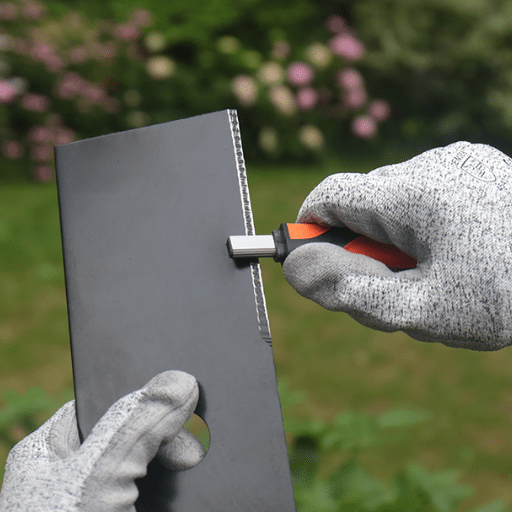
Lawn mower blades should ideally be sharpened after every 20 to 25 hours of operation. However, this may depend on how frequently you mow and on the state of your lawn. If one sees uneven or torn grass rather than cleanly cut grass, then the blade needs sharpening. In fact, regular visual checking of blade edges can be used to decide whether it needs sharpening. Keeping blades sharp keeps the lawn happy and makes the mower work better.
Factors Influencing Sharpening Frequency
- Grass Type
The type of grass in your lawn plays a significant role in how often mower blades need sharpening. Tougher grass varieties, such as Zoysia or Bermuda grass, can dull blades more quickly due to their thicker, more fibrous structure. Softer grass types, on the other hand, may not degrade blades as rapidly.
- Mowing Frequency
The more often you mow your lawn, the quicker the blades will dull. Regular mowing ensures a well-groomed lawn, but it also means increased wear and tear on the blades. Studies suggest that lawns maintained weekly may see blades requiring sharpening every six to eight weeks, depending on other conditions.
- Lawn Conditions
Objects like rocks, sticks, or other debris in your yard can cause significant damage to blades, dulling them much faster. Even well-maintained lawns can have hidden hazards beneath dense vegetation, which can lead to nicks or chips on the blade edge.
- Blade Material
The composition of the mower blades affects their longevity. High-carbon steel blades are more durable and hold their edge longer compared to standard steel blades, but they also require careful maintenance to preserve their effectiveness.
- Seasonal Considerations
The time of year can influence sharpening needs. During peak mowing seasons, like spring and early summer, when grass tends to grow faster, blades will likely dull more quickly due to the increased use. Conversely, in colder months or drier climates, blade wear may slow.
- Average Blade Lifespan and Performance
On average, a mower blade should be sharpened after every 20 to 25 hours of use as a general guideline. However, heavy use or mowing thick, wet grass may reduce this interval. Tests have shown that dull blades can result in up to 20% higher fuel consumption and less efficient grass cutting.
By paying attention to these factors and inspecting your mower blades regularly, you can better determine the ideal sharpening schedule for your specific circumstances, ensuring optimal blade performance and a healthier lawn.
General Recommendations for Lawn Care
- Mowing Practices
Regular mowing is essential for maintaining a healthy lawn. Aim to keep your grass height between 2.5 to 4 inches, depending on the grass type, to promote strong roots and prevent weed growth. It’s recommended to follow the “one-third rule,” which means avoiding cutting more than one-third of the grass blade length at one time. Additionally, ensure your mower blades are sharp, as dull blades can tear grass, leading to increased susceptibility to diseases.
- Watering Guidelines
Proper watering is crucial to a thriving lawn. Most lawns require 1 to 1.5 inches of water per week, including rainfall. Early morning watering is optimal, as it reduces water loss through evaporation and minimizes the risk of fungal growth. Deep, infrequent watering encourages deep root development, making the lawn more drought-resistant.
- Fertilization Strategies
Fertilize your lawn based on its specific nutrient needs, which may vary depending on the grass type and soil conditions. A soil test can provide insights into nutrient deficiencies. Typically, cool-season grasses benefit from fertilization in the fall, while warm-season grasses thrive with springtime applications. Avoid over-fertilizing, as it can lead to weak grass and environmental runoff issues.
- Weed and Pest Control
Regularly monitor your lawn for weeds or pests. Hand-pulling weeds or applying pre-emergent herbicides can prevent unwanted growth. For pest control, introducing beneficial insects like ladybugs or using organic pest deterrents can help maintain a balanced ecosystem. Always apply chemicals responsibly to avoid harm to the environment.
- Aeration and Overseeding
To prevent soil compaction and improve root health, consider aerating your lawn at least once a year, especially in high-traffic areas. Aeration improves water, air, and nutrient penetration. Combine this with overseeding to fill in bare spots and maintain a dense, lush lawn resistant to weeds and diseases.
- Seasonal Adjustments
Adapt your lawn care routine based on the season. For instance, reduce mowing frequency and adjust watering during colder months while actively fertilizing and aerating during active growth seasons. Be attentive to local climate patterns to optimize your approach.
By following these comprehensive practices, you can enjoy a vibrant, healthy lawn year-round while minimizing environmental impact and maintenance efforts.
Signs That Indicate It’s Time to Sharpen Again
A sharp lawn mower blade is essential for maintaining a healthy lawn, and recognizing when it’s time to sharpen can save both time and effort. Here are key indicators that your mower blade requires attention:
- Torn or Frayed Grass Blades
If you notice the tips of your grass are turning brown or look ragged after mowing, this is a clear sign of a dull blade. Instead of cutting cleanly, a dull blade tears the grass, leaving it vulnerable to disease and stress. Studies suggest that finely cut grass blades recover more efficiently and maintain better hydration.
- Uneven Cuts Across the Lawn
A dull blade may cause an uneven cut, leaving some areas of grass taller or scalping certain spots. This not only affects the lawn’s appearance but can also lead to uneven growth and weakened grass over time.
- Extra Effort While Mowing
If you find yourself pushing harder than usual or needing to go over the same area multiple times for a clean cut, this often indicates that the blade has lost its sharp edge. A sharp mower blade reduces mowing time and energy by providing a single, clean cut with minimal resistance.
- Visible Nicks and Dents on the Blade
Regular inspection of the mower blade can reveal visible damage. Nicks, dents, or bends on the blade are strong indicators that it either needs sharpening or replacement. Damaged blades significantly reduce mowing efficiency and can harm the mower itself.
- Increase in Fuel or Battery Consumption
When your mower has to work harder due to a dull blade, fuel or battery usage tends to increase. Monitoring this can help identify when blade maintenance is overdue, ensuring energy efficiency and reducing unnecessary costs.
By paying attention to these warning signs and sharpening your mower blades as needed, you’ll promote healthier grass growth, improve mowing efficiency, and extend the life of your lawn equipment. Experts recommend sharpening blades after 20-25 hours of use or at least twice per mowing season to achieve optimal results.
Lawn Mower Maintenance Tips
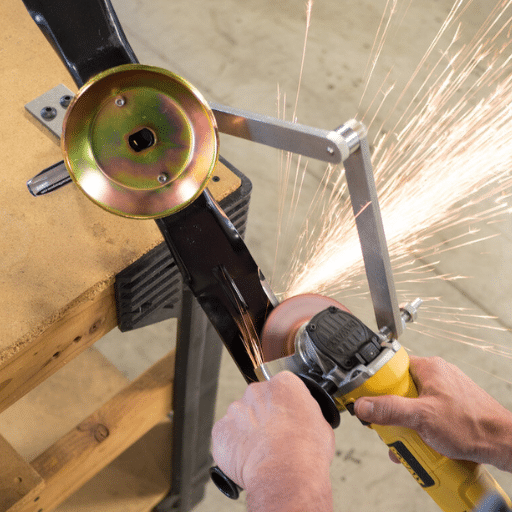
1. Change the Oil
Change the oil after every 25 hours of use or at least once a season. Use the oil type recommended by the manufacturer for best results.
2. Cleaning the Air Filter
Check the air filter and clean it intermittently to prevent debris from building up. Replace it once a year or more frequently if you mow in dusty conditions.
3. Sharpening the Blades
Sharpen mower blades every 20-25 hours of use or twice a season to ensure clean cuts and lawn health.
4. Spark Plug
Have the spark plug changed at the beginning of the mowing season so that the engine runs smoothly.
5. Tire and Belt Inspection
Make sure that they keep the correct pressure on tires. Check the belts for signs of wear and tear and replace them if necessary. This will prevent future interference.
6. Cleaning the Machine
Glorify the mower deck with a neat cleaning after each use. Grass sticking to it will lead to rust or clogging. Use a hose or scraper tool.
With these simple maintenance steps, you can stretch the life of your lawnmower and keep it running efficiently all through the mowing season.
Routine Maintenance for Optimal Performance
The blades are sharpened regularly, oil levels checked, air filter changed, and tires and belts examined and kept in good condition. I also clean the mower deck at the end of the day to prevent any buildup. This keeps the lawn mower in good functioning condition through the season.
Cleaning Your Lawn Mower After Use
The lawn mower is cleaned after every use of grass clippings and other debris from the mower deck and blades. I brush or hose it down, making sure the discharge chute is not clogged. This way, never will buildup occur and the mower will run well.
Storage Tips to Extend Blade Life
My favorite way of prolonging the longevity of mower blades is placing the lawn mower in a cool, clean, and dry space to protect it from moisture-induced rust. After every session, I make sure to clean and dry the blades. I then proceed to apply a very slight coating of oil that protects the blades against corrosion till the dulling season is warmed.
Troubleshooting Common Issues Related to Sharpening Lawn Mower Blades

- Uneven Cuts After Sharpening
- Ensure the blade is balanced. An unbalanced blade can create uneven cuts and may damage the mower. Use a blade balancer or balance it manually by checking if both sides are of equal weight.
- Blade Dulls Quickly
- Check the quality of the sharpening tools used. Using dull or inappropriate tools can result in a poorly sharpened edge. Also, avoid hitting rocks, soil, or debris, as these can quickly dull the blade.
- Difficulty Cutting Grass
- Verify the blade is sharpened at the correct angle, typically 30-45 degrees. An incorrect angle can reduce cutting efficiency.
- Blade Appears Damaged or Worn
- Inspect the blade for cracks, bends, or excessive wear. If the damage is extensive, it’s better to replace the blade rather than attempting to sharpen it.
- Blade Vibrates After Reinstallation
- Double-check the blade is secured tightly and properly aligned. A loose or misaligned blade can cause vibration and impact mower performance.
Addressing these common issues promptly ensures effective mowing and maintains the health of your lawn mower.
Inconsistent Cutting After Sharpening
If you notice your blades giving the mower uneven cuts even when you’re sure that they’re properly sharpened, then several factors might contribute to that problem. One, check and make sure the blade is balanced. An unbalanced blade may wobble as it rotates, causing uneven patterns of cutting on the grass. Testing for balance is best done right after sharpening by hanging the blade on a nail or on a blade balancer. If one end drops lower than the other, then it is not yet fully balanced and needs further adjustment.
Next, check the edge of the blade. An edge made too thin will often roll or ding up when cutting through tough grass or hit small debris and, in doing so, will lose its ability to cut effectively. For the right balance of durability and sharpness, experts recommend sharpening the blade at an angle between 30 and 45 degrees.
If the terrain is uneven or the deck isn’t properly aligned, inconsistent cutting could falsify the evidence of lawnmower malfunctions. Check the cutting height settings of your mower on all sides to keep it even. Grass accumulation is another common factor- clean underneath your mower regularly to prevent the buildup of clumps that hinder smooth mowing.
Remember to consider the lawn status herelastly. From overgrown to uneven grass, working on those might require two or more passes to get uniform results. Keep the mower on the operating schedule and on time for repairs to keep an even cut. According to recent studies, blades that are balanced and decks that are clean can give up to 25 percent more precision in cutting, hence high priority in lawn care.
Vibration Issues When Mowing
Unusual vibrations during mowing can point toward some underlying mechanical problems with the lawn mower. Vibration issues may result from unbalanced or bent blades, loose parts, or worn-out mower components. This causes an imbalance on the blades that shift and vibrate when in contact with the mower deck; this vibration puts wear on the machine and causes uneven cutting. Balancing mower blades has been reportedly shown to greatly decrease vibration and improve operating smoothness and the life span of the mower itself.
Other causes of vibrations include loose bolts or fasteners on the lawn mower decks and engine housing. Make sure to inspect and tighten them and to keep the structure secure. Bent or damaged crankshafts are also one of the sure paths to excessive vibrations. Research highlights the fact that frequent impact events, such as those experienced when running over rocks or tree roots, create conditions that typically misalign the crankshaft, which then manifests as a never-ceasing vibration problem.
Follow-up by examining the mower consistently. Change worn-out parts, sharpen and balance the blades, and remove any debris that accumulates under the deck. Data also states that using the right fuel and making sure the engine is kept in good condition will give you another array of benefits, such as smooth operation. If you do all these things, you’ll further reduce vibrations and help the mower perform at its best.
Blade Damage and How to Address It
Blade damage remains one of the most common issues experienced by mower owners, being caused when the blade hits hard objects such as rocks, roots, or uneven grounds. A damaged blade might compromise the quality of cutting, increase vibrations, and hinder grass cutting being done evenly. Consequently, it results in undue extra strain being placed on the engine. Other signs might include nicks, cracks in the blade, or bent edges, or an overall dullness.
Depending on the level of blade damage, turn off the mower and disconnect the spark plug for safety. Carry out a visual check of the blade for any obvious damage and consider sharpening or replacing the blades. Sharpen blades regularly to achieve optimum cutting performance, possibly every 20-25 mowing sessions. However, if damage is extremely severe, like cracks or bends, go ahead and replace blades immediately to avoid any further issues. While research states that high-standard replacement blades for the specific mower can prevent much of the other wear.
Proper storage and maintenance procedures can help reduce the potential for blade damage. Cleaning blades after every use prevents dirt from building up that might cause rusting or wear and tear. For mowing into tricky areas of rocky terrain or hard surfaces, also exercise caution, setting the deck height appropriately to avoid unnecessary contact.
By doing a regular inspection and maintenance and care of your mower blades, you can promote smooth operation of lawn care, extend the life of the equipment, and earn a clean working lawn.
Reference Sources
-
Hand Tools Safety: Lawncare Training Guide – Virginia Tech
This guide provides safety and maintenance tips, including blade sharpening. -
Rotary Mowers Safety: Lawn Care Training Guide – Virginia Tech
Discusses rotary mower blade maintenance and sharpening techniques. -
Chippers Shred Big Jobs Down to Size – Michigan State University
Includes insights on blade sharpening and maintenance for lawn equipment.
Frequently Asked Questions (FAQs)
How to Sharpen a Lawn Mower Blade: What You Need to Know
To sharpen a lawn mower blade effectively, it’s essential to understand the tools and methods involved. You can choose between using a flat file, an angle grinder, or a bench grinder. Each method has its advantages, so select one that suits your skill level and available tools.
What are the Steps to Remove the Blade from a Lawnmower?
To remove the blade, first, make sure the lawn mower is turned off and the spark plug wire is disconnected for safety. Then, use a wrench to loosen the bolt that secures the blade. Once the bolt is removed, you can safely take off the lawnmower blade for sharpening.
How Can I Sharpen My Mower Blades with a File?
Using a file to sharpen your mower blades involves holding the blade securely and running the file along the bevel of the blade. Aim for a consistent angle to ensure an even edge. This method is effective for small nicks and is beginner-friendly.
What is the Best Way to Sharpen a Mower Blade Using a Bench Grinder?
A bench grinder can quickly sharpen your mower blades. To use it, secure the blade and gently press it against the grinding wheel at a consistent angle. Be cautious not to overheat the blade, as this can affect its temper.
How Do I Check the Balance of My Lawnmower Blade After Sharpening?
After sharpening, it’s crucial to check the balance of the lawnmower blade. You can do this by placing the blade on a nail or similar object at the center. If one side dips, it may require additional sharpening. A balanced blade ensures a smoother cut while mowing.
Can I Sharpen My Mower Blades Without Removing Them?
While it’s possible to sharpen mower blades without removing them, it’s not recommended. Removing the blade allows for a more thorough sharpening and inspection, ensuring that the blades are properly maintained for effective lawn mowing.
What Are the Signs That My Lawnmower Blade Needs to Be Sharpened?
Signs that your lawnmower blade needs to be sharpened include ragged grass edges, excessive vibrations during operation, and the mower struggling to cut through grass. Regular maintenance is key to prolonged performance.
How Do I Reinstall the Blade After Sharpening?
To reinstall the blade, first, ensure it is clean and sharp. Align it correctly on the spindle, place the bolt back in, and tighten it securely. Don’t forget to reconnect the spark plug wire before starting the mower.
What Tools Do I Need for Blade Sharpening?
The tools required for blade sharpening include a file, an angle grinder or bench grinder, a wrench for removal, and safety gear like gloves and goggles. Having the right tools will make the sharpening process more efficient and safe.






